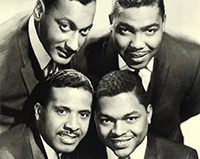Wow isn't that like 4-5 surround albums now from Blue Öyster Cult?
that's all 3 now in Dolby Audio;
2 x vintage Quad's and 1 x 5.1 mix previously released on MCh SACD

Wow isn't that like 4-5 surround albums now from Blue Öyster Cult?


I wonder if this a fresh transfer from the quad master or the same as the '90s DTS-CD?
I wonder if this a fresh transfer from the quad master or the same as the '90s DTS-CD?
To be fair the thread title is slightly confusing... Most of these listings are quad albums, yet it's not referenced?Try looking in the Dolby Atmos thread. This is the Dolby Audio thread.
Awesome that this Quad mix is now available! Not the greatest in terms of sound quality, but that's just the way it was recorded and still a fun mix. Thanks for sharing.
To be fair the thread title is slightly confusing... Most of these listings are quad albums, yet it's not referenced?
And the Dolby Audio tag is quite easy to confuse with Dolby Atmos from a quick glance. Quite why Apple decided to use this 'Dolby Audio' tag is pretty barmy to me... Maybe getting people to misread it as Atmos was entirely their motive?!
Awesome that this Quad mix is now available! Not the greatest in terms of sound quality, but that's just the way it was recorded and still a fun mix. Thanks for sharing.

Indeed, the title track in particular is quite a trip. My only knock on the quad mix is that the guitar solo in "Here We Go Again" is MIA.i don't know (there's still a Centre channel this time but its empty/silent no fake stuff going on, though that's probably not an indication of anything) anyway it sounds very good here to me, quite crankable and its been a while since i last heard it so i'd forgotten what an active mix it is, wow very Surround-y!!

its great but its Dolby Atmos rather than Dolby Audio

Hells bells, I'm hopeless at this.its great but its Dolby Atmos rather than Dolby Audio

Just added yesterday to the Library of Congress National Recording Registry.
https://www.loc.gov/programs/nation...ng-registry/registry-by-induction-years/2022/
https://music.apple.com/us/album/reach-out-ill-be-there/1475816828?i=1475818105
Another winner vintage Motown full 6-channel 5.1 mix.
Dry and powerful fronts, ambience center, sub-octave bass guitar LFE.
LR backing vocals & flutes + ambience, RR dry tambourine triplets & a delightful discrete rhythm guitar.
“Reach Out, I’ll Be There” (single). The Four Tops. (1966)

The Four Tops
Courtesy: Universal
According to the Motown Museum, “Reach Out, I'll Be There” was the Four Tops’ biggest hit and is considered the vocal group’s theme song.
Recorded in Studio A at Hitsville USA and written and produced by the powerhouse team of Holland-Dozier-Holland, the lyrics grew out of their feeling that women “wanted someone to be there for them, through thick or thin.”
Lamont Dozier said that he wanted to write “a journey of emotions with sustained tension, like a bolero.”
To achieve that, he “alternated the keys, from a minor, Russian feel in the verse to a major, gospel feel in the chorus.”
Levi Stubbs’ impassioned vocal was inspired by an unlikely source: Bob Dylan.
According to Dozier, they were inspired by Dylan’s shout singing style on “Like a Rolling Stone” and wanted lead vocalist Stubbs to sing like that.
To give his vocal added intensity, HDH put Stubbs at the top of his vocal range so he would have to strain a little.
The “galloping” sound, heard prominently at the beginning of the song, is a series of triplet beats struck on the plastic head of a tambourine with no jingles, played by Motown producer Norman Whitfield.
Levi Stubbs improvised the lyric, “Just look over your shoulder.”
It sounded good, so they kept it in.